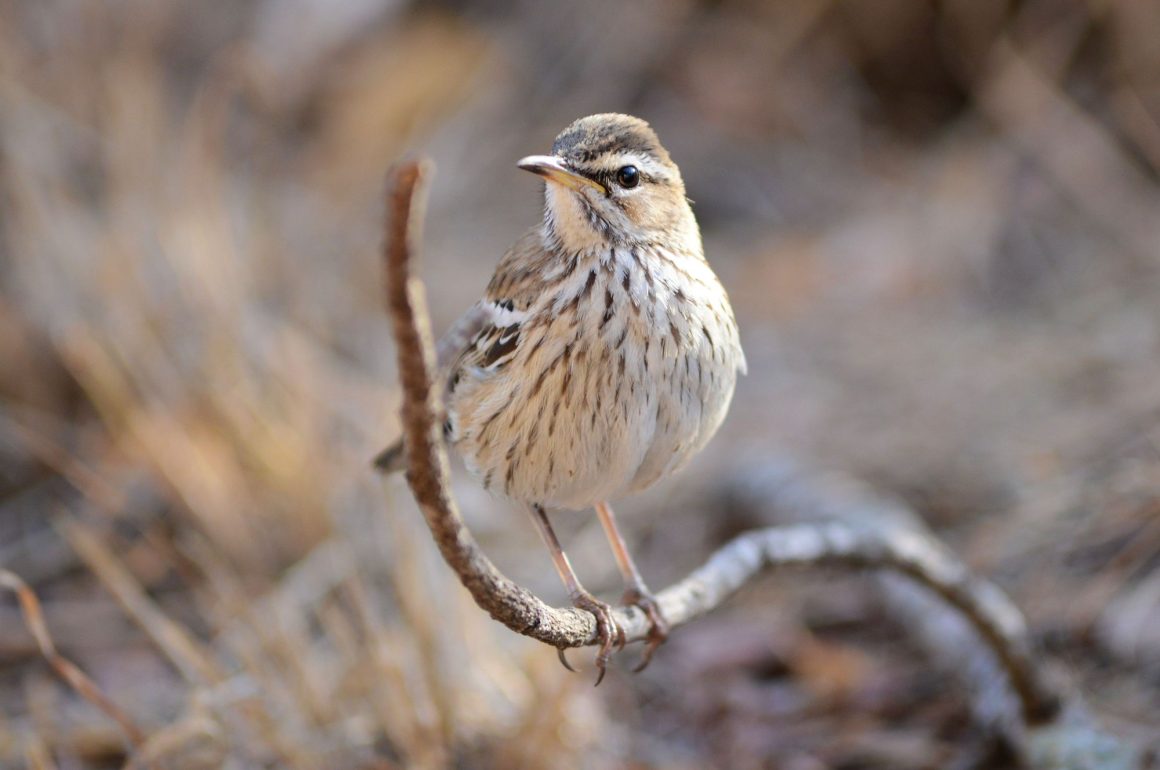
One of the best areas for game-viewing in Kruger National Park is Satara restcamp. The open savannah dominating this area provides a suite of open-country birds as well, which can be more difficult to see in other areas of the park. I also always enjoyed strolls around the camp to watch and photograph the rather tame birds during the heat of the day, when game drives were less productive.
The campsite is probably also one of the best spots to see honey badgers, which can be seen roaming around in the dark in search of scraps. Even more memorable was seeing an African wildcat at the filling station in the camp at dusk. During the day, finches, sunbirds, and various other passerines and non-passerines to keep me busy. Besides the typical starlings and hornbills, Marico Sunbird was quite a common species, showing off its iridescent colours in the sunlight. The various aloe flowers were particularly popular among these birds, and some flowers were nearly permanently attended by these and other sunbird species as well.
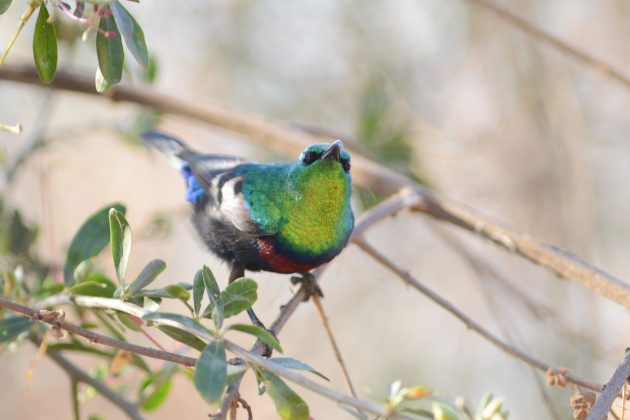
The bare and cracked soil was also a surprisingly productive foraging ground for terrestrial birds, including White-browed Scrub-Robin (featured image), Red-billed Buffalo-Weaver, and Eurasian Hoopoe (obviously africana subspecies). While the hoopoes were always fun to watch, we also had them in our garden back home, so I paid more attention to the buffalo-weavers. These birds birds are actually quite interesting in terms of reproductive biology, as the males have pseudo-penises that do not serve a direct reproductive function. This is a very rare phenomenon in birds but does also exist in some other animal groups (such as in spotted hyenas). My evolutionary biology nerdy side aside, the buffalo-weavers were also simply enjoyable to watch because of their attractive deep black colouration and coral-red bill.
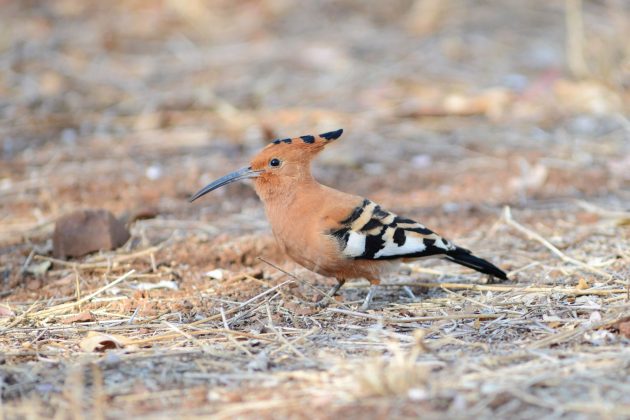
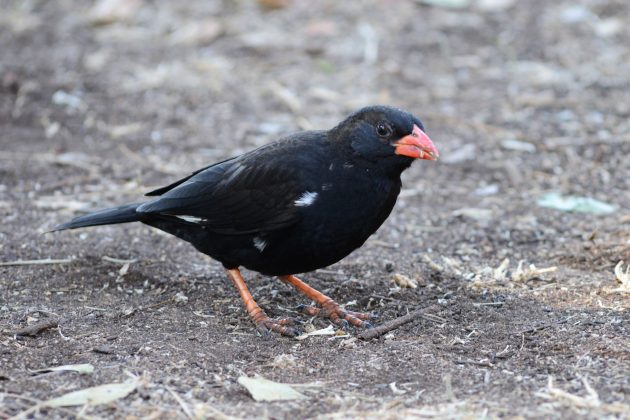
While sightings of wild cats, cheetahs, and various other mammals mainly entertained us on game drives in the area, birds also sometimes managed to steal the show. This included a sighting of a Verreaux’s Eagle-Owl (fittingly named “milk eagle owl” in German). These birds are uncharacteristically easy to find for owls, largely because of their habit of perching on rather exposed branches and being easily spotted during the day. In the camp itself, the African Scops-Owl on the opposite end of the spectrum can also be found rather easily by asking the staff if they know their diurnal roost sites.
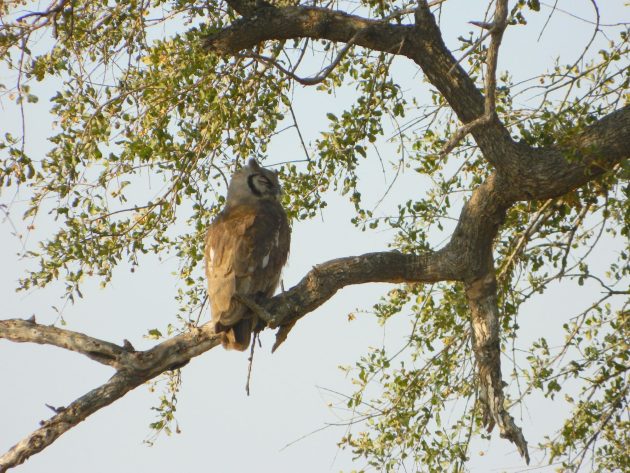
The open country is also good for pipits, larks, and other small open-country species. Larger birds such as Secretarybird are also present though, and we were particularly happy to come across a Black-bellied Bustard. These birds are quite widespread but not that frequently seen, owing to their remarkable ability to sneak away into the grass, even if it is rather short. Like most members of their family, they have a very entertaining display – not as spectacular as the Great Bustard, but still worth watching a video on.
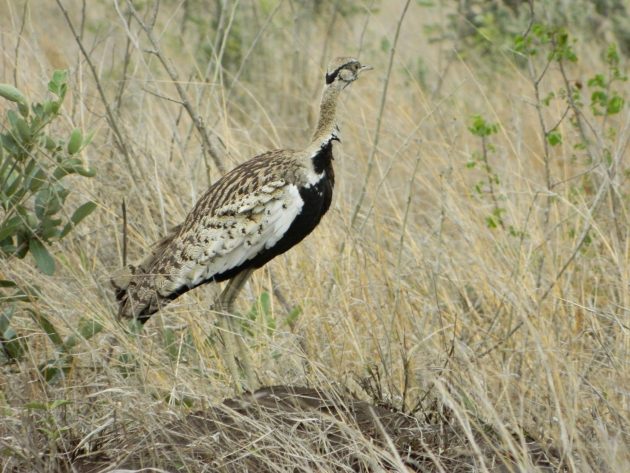
The open scenery is a nice break from the sometimes seemingly endless mopane woodlands further north, before the vegetation transitions into a denser woodland further south in Kruger. While I have not seen any particularly rare species in this area, good bird and wildlife sightings are virtually guaranteed.


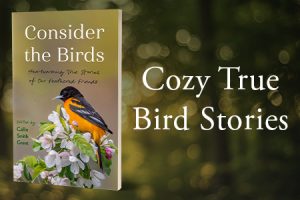

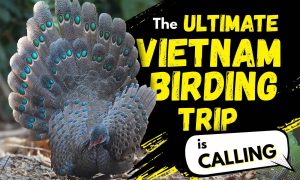
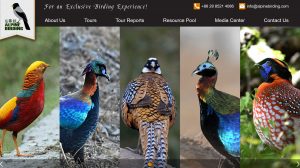
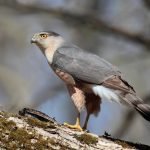

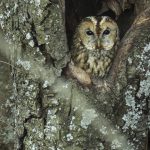
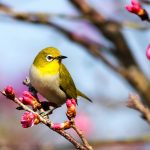

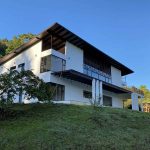
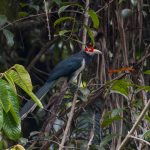
Trip down memory lane – great posts, Luca.
Thank you Peter!